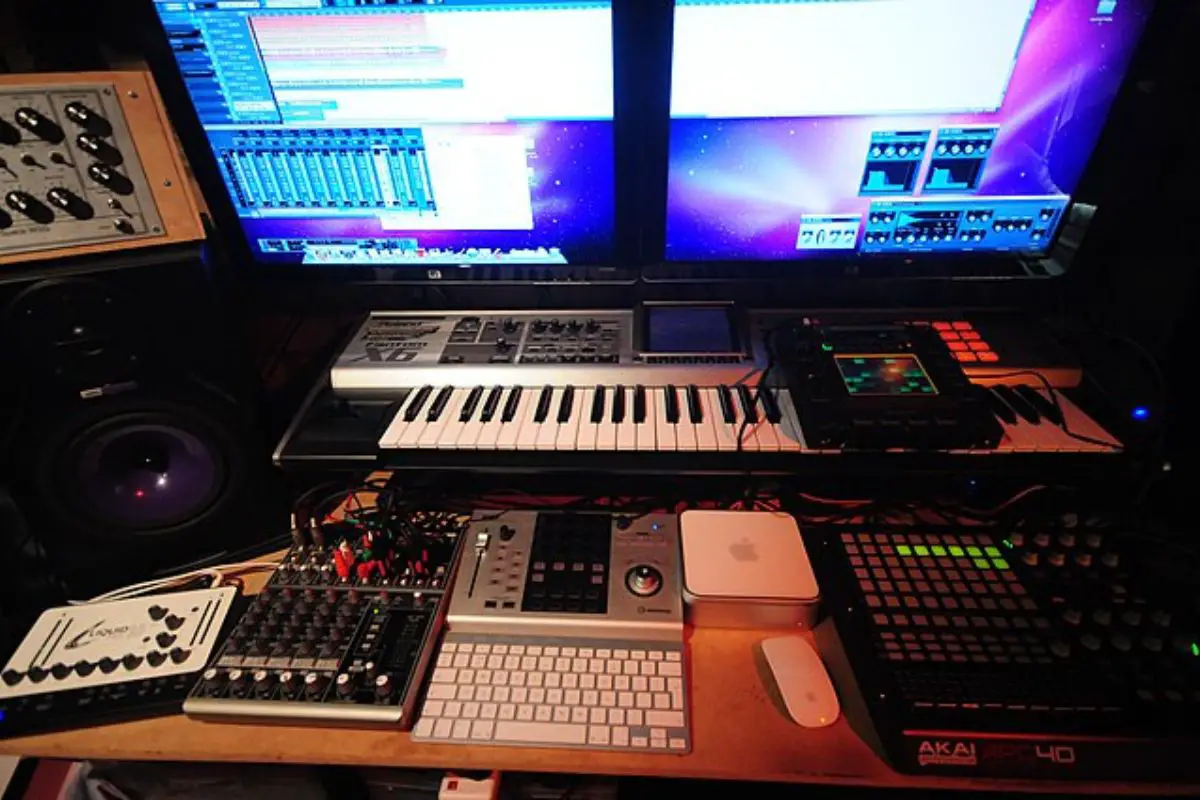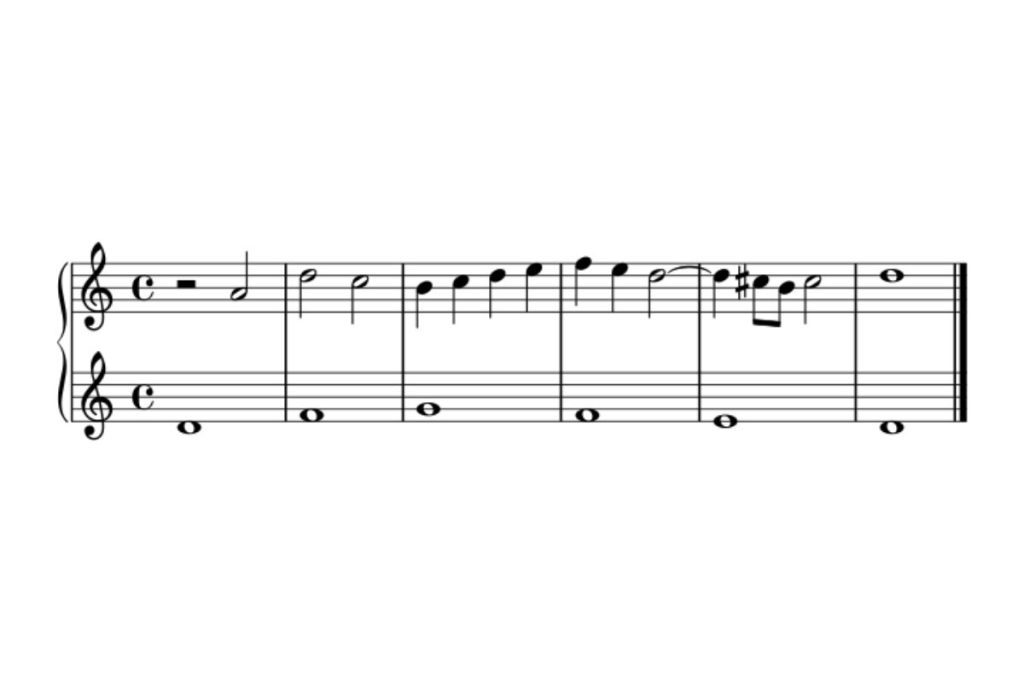Are you ready to unlock the mesmerizing depths of musical harmony? Can you imagine melodies intertwining like never before, creating a symphony of complexity and beauty? Brace yourself because we’re about to dive into the enchanting world of counterpoint.
What is a counterpoint? Counterpoint is a compositional technique in which multiple melodic lines complement each other while maintaining their independence, creating a rich tapestry of musical voices.
What is a counterpoint?
A counterpoint is a musical approach in which two or more melodic lines (or “voices”) complement one another but work independently. The name derives from the Latin punctus contra punctum, which means “point against point.” Composers employ counterpoint to create polyphonic music.

Counterpoint is not just a fancy term thrown around by music theorists. It holds immense significance in the world of music, adding depth and intricacy to compositions that leave a lasting impact. Let’s explore the reasons why counterpoint is a game-changer in the realm of music.
Musical independence
When different melodic lines dance together in counterpoint, each voice asserts its independence while intertwining with others, creating a sonic landscape that goes beyond a single melody. This intricate interplay gives the music a sense of depth and complexity, captivating listeners with its artistry and emotion.
A harmonic conversation
Imagine a musical conversation where each melodic line takes turns expressing its thoughts and ideas yet harmoniously connects with others. Counterpoint enables this dialogue, allowing melodies to engage in a rich musical exchange. It’s like witnessing a dynamic interaction between different musical personalities, each with its unique character and contribution.
Breaking the monotony
In a world filled with predictable and formulaic music, counterpoint brings freshness and vitality to compositions. It challenges the status quo, defying conventional expectations and introducing unexpected twists and turns. The interweaving melodies keep listeners engaged, providing moments of surprise and delight.
The dos and don’ts when incorporating counterpoints in music:
| Dos | Don’ts |
|---|---|
| Ensure the counterpoint harmonizes with the main melody. | Avoid clashing or creating dissonance with the main melody or underlying harmony. |
| Strive for melodic independence and individuality between the main melody and the counterpoint. | Don’t make the counterpoint excessively complex or convoluted. |
| Experiment with intervals, rhythms, and phrasing for engaging interactions. | Don’t neglect the rhythmic interplay between the main melody and the counterpoint. |
| Consider overall texture and balance, avoiding overpowering the main melody. | Don’t disregard the harmonic context and tonal structure of the composition. |
| Follow rules of counterpoint, such as voice leading and consonance/dissonance resolution. | Don’t be afraid to experiment and break rules, but ensure musicality and coherence. |
AKAI Professional MPK Mini MK3

AKAI Professional MPK Mini MK3
What is species counterpoint, and why should you care?
Species counterpoint is a teaching tool that helps us delve deeper into the world of counterpoint itself. By breaking down counterpoints into different species, we can gradually develop our understanding and proficiency in crafting captivating musical lines.
The five species of counterpoint
Species counterpoint, as outlined by Johann Joseph Fux in his renowned work Gradus ad Parnassum, consists of five distinct species. Each species builds upon the previous one, introducing new challenges and techniques. Let’s explore these species and their unique characteristics:
First species counterpoint
- Note durations: In the first species counterpoint, we keep the note durations the same.
- Melodic motion: Focus on stepwise motion, with occasional leaps that avoid the final chord resolution.
- Interval choices: Space notes by a third or sixth for pleasing harmonies, use octaves and perfect fifths occasionally, and avoid perfect fourths.
- Harmonic restrictions: Prefer diatonic notes, avoid dissonant intervals, and limit dissonance on strong beats.
Second species counterpoint
- Note durations: Emphasize independent note durations between the voices.
- Melodic motion: Harmonically adventurous weaker beats can contrast with consonant strong beats.
- Interval choices: Employ consonant intervals on strong beats, but explore more harmonically adventurous options on weak beats.
Third species counterpoint
- Rhythmic independence: Strive for even greater rhythmic independence between the voices.
- Melodic motion: Emphasize contrary motion—when one voice moves up, the other should move down.
- Intentional dissonance: Incorporate intentional dissonance through double neighbor tones and double passing tones.
Fourth species counterpoint
- Introduction of suspensions: Utilize suspensions to create tension and release.
- Melodic motion: Combine oblique motion (one voice stays the same) with other types of motion.
- Role of suspended notes: Suspended notes create dissonance before resolving to a consonant chord.
Fifth species counterpoint (florid counterpoint)
- Combining previous species: Florid counterpoint brings together the techniques from the previous four species.
- Melodic motion: Utilize a mixture of parallel, contrary, and oblique motion.
- The blend of consonance and dissonance: Incorporate a balance of consonant and dissonant intervals.
When it comes to home recording studios or music production, integrating species counterpoint can bring a whole new level of sophistication and depth to your tracks.

What is the fifth species counterpoint, and how can it take your compositions to the next level?
The fifth species counterpoint, my friends, is the pinnacle of the counterpoint journey. Also known as “florid counterpoint,” it combines the techniques and principles of the previous four species, allowing you to create intricate and harmonically rich compositions.
The culmination of counterpoint
The fifth species counterpoint brings together all the skills and knowledge gained from the previous species, giving you the freedom to blend various melodic motions, intervals, and harmonic choices. It offers a holistic approach to counterpoint, enabling you to craft compositions that are dynamic, engaging, and filled with both consonance and dissonance.
Blending melodic motions
In the fifth species counterpoint, you have the flexibility to utilize different types of melodic motion to create captivating musical passages. Let’s explore some key techniques:
Parallel motion
- Definition: When two voices move in the same direction, maintaining a consistent interval relationship.
- Effect: Parallel motion adds strength and intensity to your composition, creating a sense of unity and power.
Contrary motion
- Definition: When two voices move in opposite directions, creating melodic independence.
- Effect: Contrary motion adds complexity and harmonic interest, allowing each voice to have its own melodic character.
Oblique motion
- Definition: When one voice remains stationary while the other voice moves.
- Effect: Oblique motion creates a sense of stability and tension release, adding variation to your composition.
Achieving consonance and dissonance
Fifth species counterpoint allows you to skillfully balance consonant and dissonant intervals, creating a captivating interplay between musical voices. Here are some key considerations:
Consonance
- Definition: Harmonically pleasing intervals that sound stable and resolved.
- Examples: Perfect consonances such as unisons, octaves, perfect fourths, and fifths.
- Effect: Consonant intervals provide a sense of resolution and stability, grounding your composition.
Dissonance
- Definition: Tension-filled intervals that sound unstable and require resolution.
- Examples: Seconds, sevenths, and tritones.
- Effect: Dissonant intervals add interest and color to your composition, creating moments of tension and anticipation.
What is the impact of counterpoint in music production?
Music production is greatly influenced by the fascinating world of counterpoint. By incorporating counterpoint techniques into home studio recording and audio engineering, musicians and producers can achieve compositions that are rich, complex, and captivating. Let’s explore some interesting data related to counterpoint and its relevance to the music production realm.
| Aspect | Data |
|---|---|
| Usage | Counterpoint is a commonly used technique in music production, especially in genres such as classical, baroque, and jazz. |
| Harmonic Depth | Incorporating counterpoint techniques adds depth and complexity to musical arrangements, creating a more immersive listening experience. |
| Instrumentation | Counterpoint allows for the simultaneous expression of multiple melodic lines, making it ideal for orchestrations and layering different instruments. |
| Emotional Impact | The intricate interplay of melodic voices in counterpoint compositions can evoke strong emotions and resonate deeply with listeners. |
| Musical Innovation | Throughout history, renowned composers have pushed the boundaries of counterpoint, leading to groundbreaking musical innovations. |
What are the advantages and disadvantages of incorporating counterpoint?
Counterpoint, my friends, offers a multitude of advantages when integrated into music production. However, it’s essential to consider both sides of the coin. Let’s delve into the pros and cons of incorporating counterpoint in your compositions.
Advantages
- Enhanced Musical Depth: Counterpoint brings richness and complexity to compositions, elevating the overall musical depth and sophistication.
- Improved Artistic Expression: By incorporating counterpoint techniques, musicians can express their artistic ideas more intricately, adding layers of emotion and meaning.
- Expanded Creative Possibilities: Counterpoint opens up a vast array of creative possibilities, enabling musicians and producers to explore unique harmonies, textures, and melodic interplay.
- Engaging Listener Experience: The interweaving melodies and harmonies of counterpoint capture the listener’s attention, creating an engaging and captivating musical experience.
Disadvantages
- Complexity and Learning Curve: Mastering counterpoint requires time, dedication, and a deep understanding of musical theory, which may present a challenge for some musicians.
- Potential Overuse or Misapplication: Improper use or excessive incorporation of counterpoint techniques can lead to compositions that sound overly complex or cluttered, lacking clarity and cohesion.
- Limitations in Certain Genres or Styles: While counterpoint is versatile, it may not always be suitable for all musical genres or styles, as some genres may prioritize simpler melodic structures or other compositional techniques.
When incorporating counterpoint into your musical productions, my friends, it’s crucial to strike a balance between artistic expression and thoughtful execution. By understanding the advantages and disadvantages, you can harness the power of counterpoint effectively to create captivating musical masterpieces.
If you want even more great tips and information, check out the video.
Frequently Asked Questions (FAQ)
I bet you still have a few lingering questions about counterpoint in music production. Let’s dive into some frequently asked questions about counterpoint.
How can counterpoint enhance the quality of my home studio recordings?
Counterpoint adds a new layer of depth and complexity to your home studio recordings by incorporating intricate melodic interplay and harmonies, creating compositions that are engaging and captivating for listeners.
Can counterpoint be applied to electronic music genres?
Absolutely! While counterpoint is commonly associated with classical and baroque music, its principles can be applied to any genre, including electronic music. Experiment with layering different melodic lines and voices to add richness and musicality to your electronic productions.
Are there any resources or exercises available to help me improve my counterpoint skills?
Certainly! There are numerous resources available, including books, online courses, and tutorials, that can guide you in developing your counterpoint skills. Practice exercises such as writing two or more independent melodies that complement each other are excellent ways to enhance your counterpoint abilities.
Conclusion
And there you have it, my friends! We’ve explored the captivating world of counterpoint in music production, delving into its techniques, applications, and the impact it can have on your compositions. Whether you’re a seasoned musician or a budding producer, incorporating counterpoint can truly elevate your musical creations to new heights.
Do you have any questions about the counterpoint? Let me know in the comments section below (I read and reply to every comment). If you found this article helpful, share it with a friend, and check out my full blog for more tips and tricks on music production. Thanks for reading, and keep making beautiful music!
Key takeaways
This article covered the main topic of counterpoint in music production. Here are some key takeaways:
- Counterpoint is a compositional technique that adds depth and complexity to musical arrangements.
- It involves the interplay of multiple melodic lines that complement each other while maintaining independence.
- Counterpoint can be applied to various music genres, including electronic music.
- Resources and exercises are available to help you improve your counterpoint skills.
- Incorporating counterpoint in your home studio recordings can enhance their quality and musicality.















